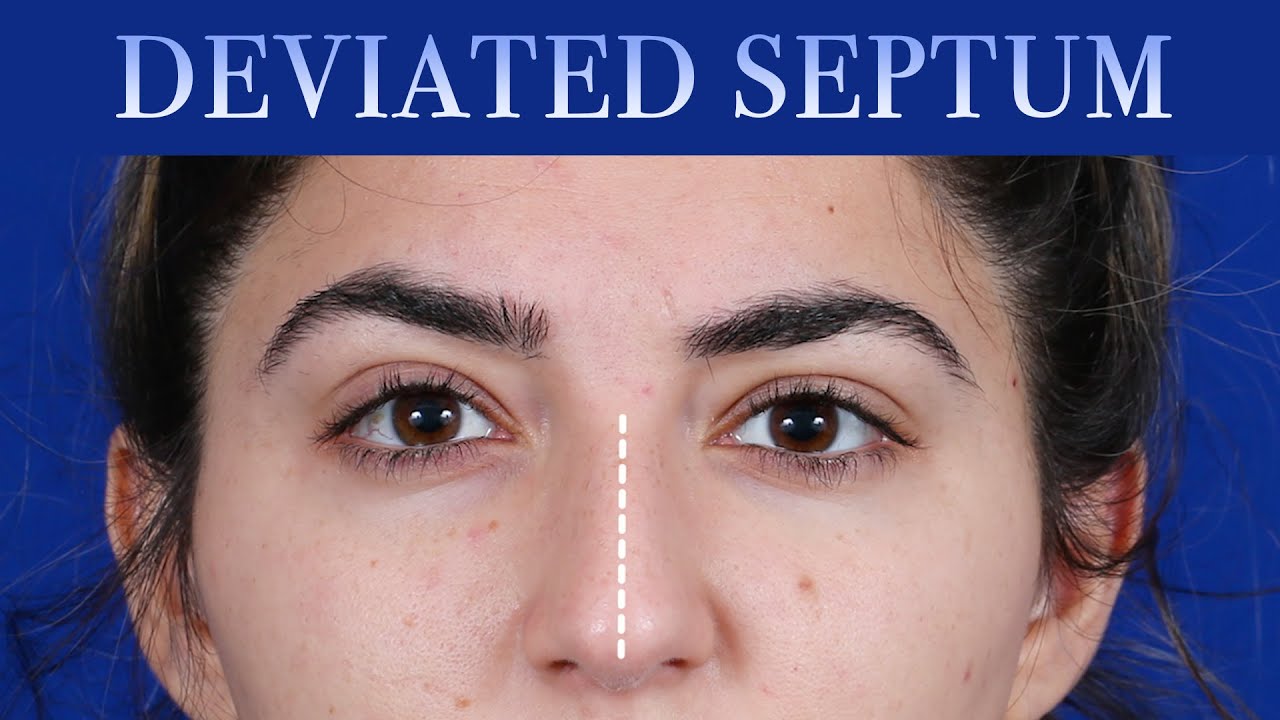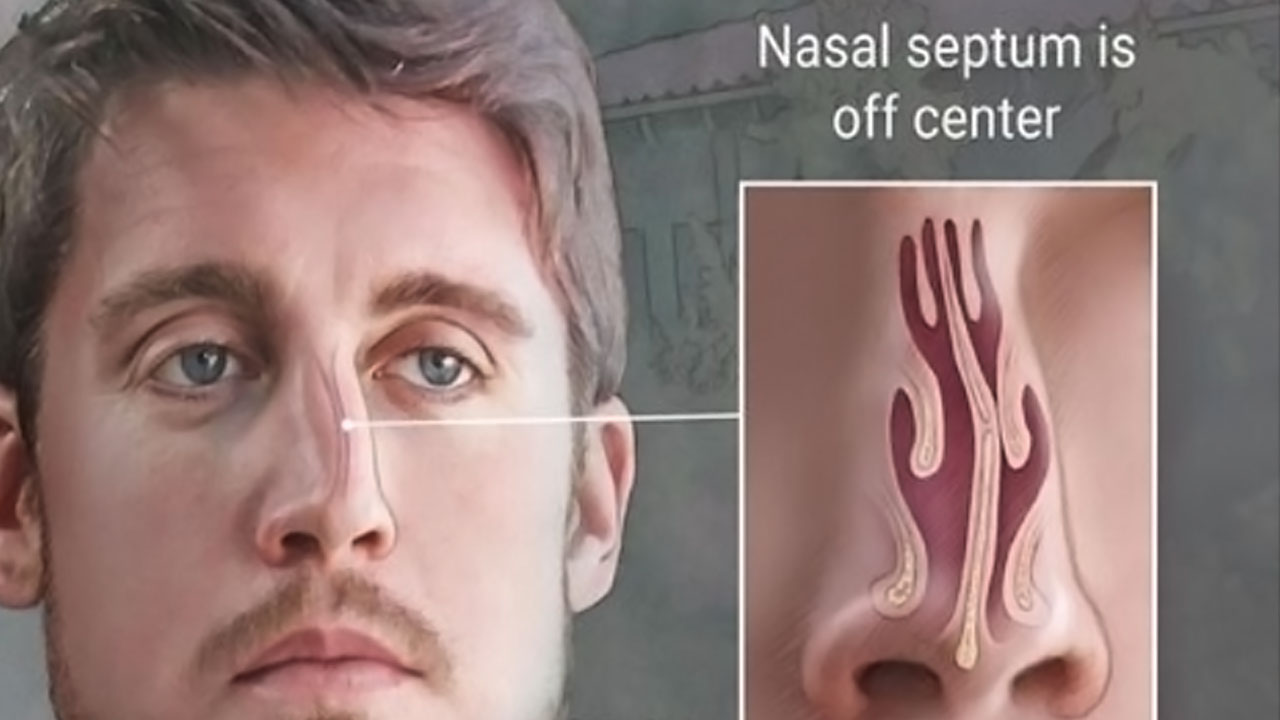Home>Finance>How Much Does Deviated Septum Surgery Cost With Insurance?


Finance
How Much Does Deviated Septum Surgery Cost With Insurance?
Published: November 3, 2023
Find out the cost of deviated septum surgery with insurance coverage. Finance your procedure and get the relief you need.
(Many of the links in this article redirect to a specific reviewed product. Your purchase of these products through affiliate links helps to generate commission for LiveWell, at no extra cost. Learn more)
Table of Contents
Introduction
Deviated septum surgery, also known as septoplasty, is a common procedure performed to correct a crooked or deviated nasal septum. This condition can cause breathing difficulties, chronic sinusitis, recurrent nosebleeds, and other nasal issues. While the decision to undergo this surgery is often motivated by health concerns, it’s important to consider the financial aspect as well.
The cost of deviated septum surgery with insurance can vary depending on several factors, including the insurance provider, the policy coverage, and the geographical location. Understanding the financial implications of this procedure is crucial to help you plan ahead and make informed decisions.
In this article, we will dive into the details of deviated septum surgery costs with insurance, including the factors that can affect the pricing, the average cost range, as well as insurance coverage options. We will also provide you with helpful tips to reduce the overall cost of the surgery.
By the end, you will have a comprehensive understanding of the financial considerations associated with deviated septum surgery, empowering you to make the best decisions for your health and budget.
Understanding Deviated Septum Surgery
A deviated nasal septum occurs when the thin wall of cartilage and bone that separates the nasal passages is not straight, but instead deviates to one side. This can obstruct airflow, leading to symptoms such as nasal congestion, difficulty breathing through the nose, frequent nosebleeds, and recurrent sinus infections. Deviated septums can be present from birth or may result from injury or trauma to the nose.
Deviated septum surgery, or septoplasty, is a surgical procedure aimed at correcting the deviation and improving nasal airflow. During the surgery, the surgeon will make an incision inside the nose and remove or reshape the deviated portion of the septum. In some cases, additional procedures such as turbinate reduction may be performed to further enhance breathing.
Septoplasty is typically performed as an outpatient procedure, meaning you can go home the same day. The surgeon may use general or local anesthesia, depending on the complexity of the surgery and your medical condition. Recovery time can vary from a few days to a couple of weeks, during which you may experience swelling, bruising, and mild discomfort. Following the surgeon’s post-operative instructions is crucial for a successful recovery.
It’s important to note that deviated septum surgery is different from cosmetic rhinoplasty, which focuses on reshaping the external appearance of the nose. While septoplasty primarily addresses functional issues related to airflow, it may also have some cosmetic benefits by improving the overall shape and symmetry of the nose.
Before considering deviated septum surgery, it’s essential to consult with an otolaryngologist, also known as an ear, nose, and throat (ENT) specialist. They will evaluate your symptoms, perform a physical examination, and recommend the appropriate treatment plan. In some cases, nonsurgical options such as medication or nasal sprays may be recommended as a first-line treatment before surgery is considered.
Factors Affecting the Cost of Deviated Septum Surgery with Insurance
When it comes to the cost of deviated septum surgery with insurance, there are several factors that can influence the overall expenses. These factors can vary from one individual to another and can impact the total cost of the procedure. Understanding these factors can help you anticipate and plan for the financial aspects of your surgery.
1. Insurance Coverage: The extent of insurance coverage can greatly affect the out-of-pocket expenses for deviated septum surgery. Different insurance policies have various levels of coverage, so it is important to review your policy and understand what is covered and what is not. Some policies may cover a significant portion of the surgery, while others may only cover a portion or exclude it altogether.
2. Network Providers: Insurance plans often have a network of preferred providers with whom they have negotiated rates. Choosing a surgeon, hospital, or clinic within your insurance network can result in lower costs as compared to going out-of-network. However, it is important to ensure that the chosen provider has the necessary expertise and experience in performing deviated septum surgeries.
3. Geographical Location: The cost of medical procedures can vary based on the geographical location. In areas with a higher cost of living, the overall expenses, including surgeon fees, hospital charges, and anesthesia costs, may be higher compared to areas with a lower cost of living.
4. Severity and Complexity of the Case: The severity and complexity of the deviated septum case can impact the surgical approach required and the duration of the procedure. More complex cases may require additional procedures or a longer surgery time, which can ultimately affect the cost.
5. Additional Procedures: In some cases, additional procedures may be required to address related nasal conditions that contribute to breathing difficulties. These procedures include turbinate reduction, sinus surgery, or nasal valve repair. The need for these additional procedures can add to the overall cost of the surgery.
6. Anesthesia and Facility Fees: Anesthesia fees and facility charges are also factors that contribute to the overall cost. The type of anesthesia used during the surgery and the facility where the procedure is performed can vary in price.
It is important to discuss these factors with your insurance provider, as well as the surgeon’s office, to get a clear understanding of the expected costs and potential out-of-pocket expenses. This will help you plan your finances accordingly and minimize any surprises when it comes to the cost of your deviated septum surgery.
Average Cost of Deviated Septum Surgery with Insurance
The cost of deviated septum surgery with insurance can vary significantly depending on the factors mentioned earlier. However, we can provide a general range to give you an idea of what to expect. Keep in mind that these figures are averages and can differ based on your specific insurance coverage and circumstances.
On average, the cost of deviated septum surgery with insurance can range from $3,000 to $10,000. This range includes the surgeon’s fees, anesthesia charges, facility costs, and any additional procedures that may be required during the surgery. It is important to note that these figures can vary widely depending on geographic location, the severity of the deviated septum, and the specific insurance plan.
However, it’s important to remember that these costs are typically before insurance coverage is applied. The amount you will be responsible for paying out-of-pocket will depend on your insurance plan’s deductibles, copayments, and co-insurance percentages. It is always a good idea to reach out to your insurance provider and inquire about your specific coverage and the potential costs associated with the surgery.
Some insurance plans may cover the full cost of the deviated septum surgery, while others may require you to meet a deductible or pay a percentage of the costs. Additionally, there may be limitations or exclusions on the coverage of certain procedures or certain surgeons or facilities. Therefore, it is crucial to thoroughly review your insurance policy and consult with your insurance provider or a healthcare professional for accurate cost estimation.
It is also worth noting that the cost of deviated septum surgery without insurance can be significantly higher. Without insurance coverage, the cost can range from $6,000 to $20,000 or more. This highlights the importance of having appropriate insurance coverage to help mitigate the financial burden of the surgery.
Remember, every individual’s situation is unique, and costs can vary. It is recommended to consult with your surgeon and insurance provider to get an accurate estimate of the cost based on your specific circumstances. Take the time to understand your insurance coverage, inquire about any potential additional costs, and explore payment options if needed.
Insurance Coverage for Deviated Septum Surgery
Insurance coverage for deviated septum surgery can vary depending on your specific insurance plan and policy. While some insurance providers may offer comprehensive coverage for this procedure, others may have limitations or exclusions. It’s crucial to understand your insurance coverage and what expenses will be covered before undergoing deviated septum surgery.
Before proceeding with surgery, contact your insurance provider to inquire about your coverage for deviated septum surgery. Here are some important questions to ask:
- What is the extent of coverage for deviated septum surgery? Are there any limitations or exclusions?
- Do I need a referral from a primary care physician or pre-authorization from the insurance company before scheduling the surgery?
- Is the surgeon, hospital, or clinic I have chosen in-network or out-of-network? How does it affect my coverage?
- What are the deductibles, copayments, and co-insurance percentages that I will be responsible for paying?
- Are there any specific conditions or medical documentation required for coverage?
By understanding the answers to these questions, you can get a clear understanding of what portion of the surgery costs you will be responsible for and plan your budget accordingly.
It is important to note that even with insurance coverage, there may still be out-of-pocket expenses. These can include deductibles, copayments, and co-insurance fees. Some insurance plans may require you to meet a certain deductible amount before coverage kicks in, while others may require you to pay a percentage of the costs. It is important to review your insurance policy or speak with your insurance provider to understand how these factors will impact your coverage.
Another factor to consider is the requirement for pre-authorization. Some insurance plans may require pre-authorization for deviated septum surgery before it can be performed. Failure to obtain pre-authorization may result in denial of coverage or increased out-of-pocket expenses.
It’s also worth mentioning that if you have a flexible spending account (FSA) or a health savings account (HSA), you may be able to use those funds to cover some of the out-of-pocket expenses associated with the surgery. These accounts allow you to set aside pre-tax dollars for eligible medical expenses.
Ultimately, proper communication with your insurance provider and understanding your policy is crucial to avoid any surprises and ensure that you receive the maximum coverage available for your deviated septum surgery.
Tips for Reducing the Cost of Deviated Septum Surgery
Deviated septum surgery can be a significant financial investment. However, there are several steps you can take to help reduce the overall cost and make the procedure more affordable. Consider implementing the following tips to minimize the financial burden of deviated septum surgery:
- Review your insurance coverage: Thoroughly review your insurance policy to understand the extent of coverage for deviated septum surgery. This includes knowing the deductibles, copayments, and co-insurance percentages you may be responsible for. Choose in-network providers whenever possible to ensure maximum coverage.
- Get pre-authorization: Before scheduling the surgery, make sure to obtain pre-authorization from your insurance provider. Failure to do so may result in denied coverage or increased out-of-pocket expenses.
- Consider a second opinion: Obtaining a second opinion from another qualified surgeon can help you gain a better understanding of your condition and explore alternative treatment options. It can also give you an opportunity to compare costs and make an informed decision about your surgeon and the overall cost of the procedure.
- Explore financing options: If you are concerned about the upfront cost, inquire with the surgeon’s office or hospital about financing options. Many facilities offer payment plans or financing options that can help you spread out the cost of the surgery over a period of time.
- Optimize your insurance plan: If possible, consider selecting an insurance plan that offers more comprehensive coverage for deviated septum surgery. While this may result in higher monthly premiums, it can significantly reduce your out-of-pocket expenses in the long run.
- Utilize flexible spending accounts (FSAs) or health savings accounts (HSAs): FSAs and HSAs allow you to set aside pre-tax dollars specifically for medical expenses. Consider contributing to these accounts to help offset the cost of the surgery with tax-free funds.
- Discuss cost-saving measures with your surgeon: Have an open conversation with your surgeon about cost-saving measures. They may be able to suggest alternative anesthesia options, explore outpatient surgery options, or recommend the use of generic medications to help reduce costs.
- Comparison shop: It’s important to gather quotes from multiple surgeons and hospitals to compare costs. However, be cautious of choosing a surgeon solely based on cost. Ensure the surgeon has the necessary expertise and experience to perform deviated septum surgery successfully.
Remember, the cost of the surgery should not be the only determining factor. Ensuring you receive quality care from a skilled surgeon is of utmost importance for a successful outcome.
By following these tips and being proactive in understanding your insurance coverage, exploring financing options, and discussing cost-saving measures with your surgeon, you can help reduce the financial burden associated with deviated septum surgery.
Conclusion
Deviated septum surgery is a common procedure that can help improve nasal airflow and alleviate symptoms associated with a deviated nasal septum. However, it’s important to consider the financial aspects of the surgery before making a decision.
Understanding the factors that can affect the cost of deviated septum surgery with insurance, as well as exploring your insurance coverage options, is crucial to avoid any surprises and plan your budget accordingly. Factors such as insurance coverage, network providers, geographical location, severity and complexity of the case, additional procedures, and anesthesia and facility fees can all impact the overall cost.
On average, the cost of deviated septum surgery with insurance can range from $3,000 to $10,000. It’s important to contact your insurance provider to understand your coverage, including deductibles, copayments, and co-insurance percentages, to get a clear estimation of your potential out-of-pocket expenses.
There are also steps you can take to reduce the cost of surgery, such as reviewing your insurance coverage, getting pre-authorization, considering a second opinion, exploring financing options, optimizing your insurance plan, utilizing FSAs or HSAs, discussing cost-saving measures with your surgeon, and comparison shopping.
Remember, while cost is an important consideration, it should not be the sole determining factor in choosing a surgeon or proceeding with deviated septum surgery. Ensuring the surgeon’s expertise, experience, and the quality of care provided are paramount for a successful outcome.
By being proactive in understanding your insurance coverage, discussing options with your surgeon, and exploring cost-saving measures, you can navigate the financial aspects of deviated septum surgery, making it more manageable and ensuring a positive experience and outcome.














